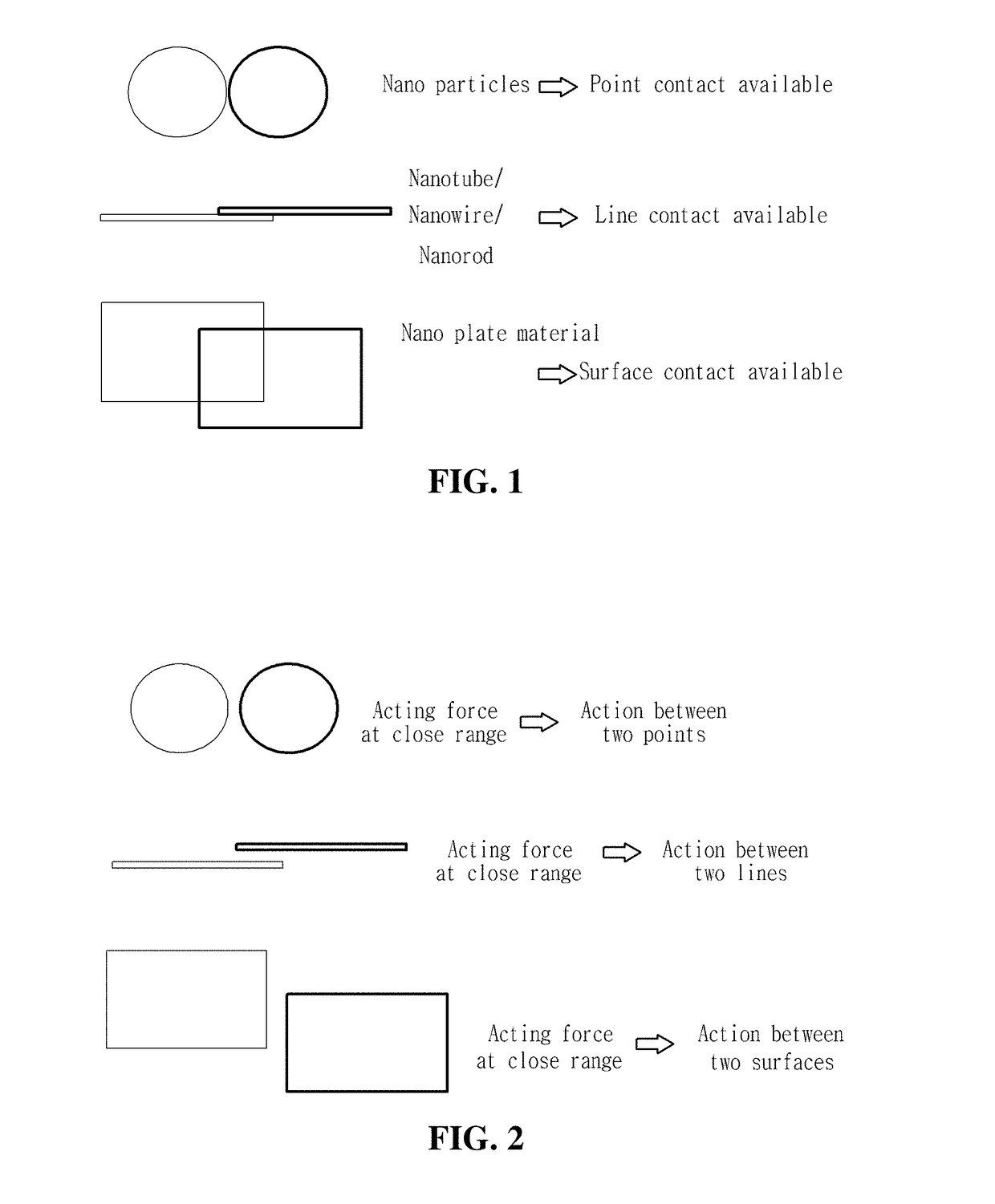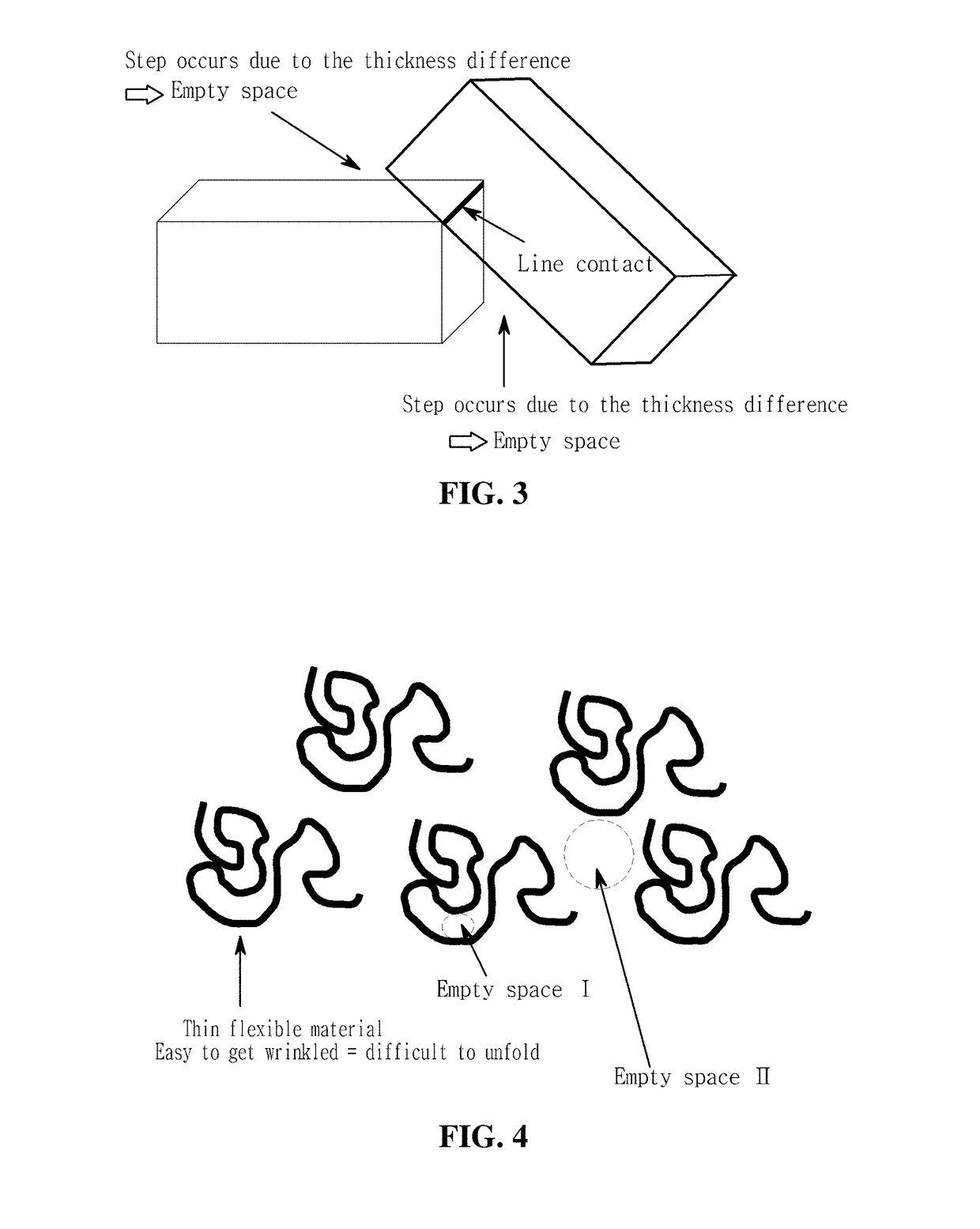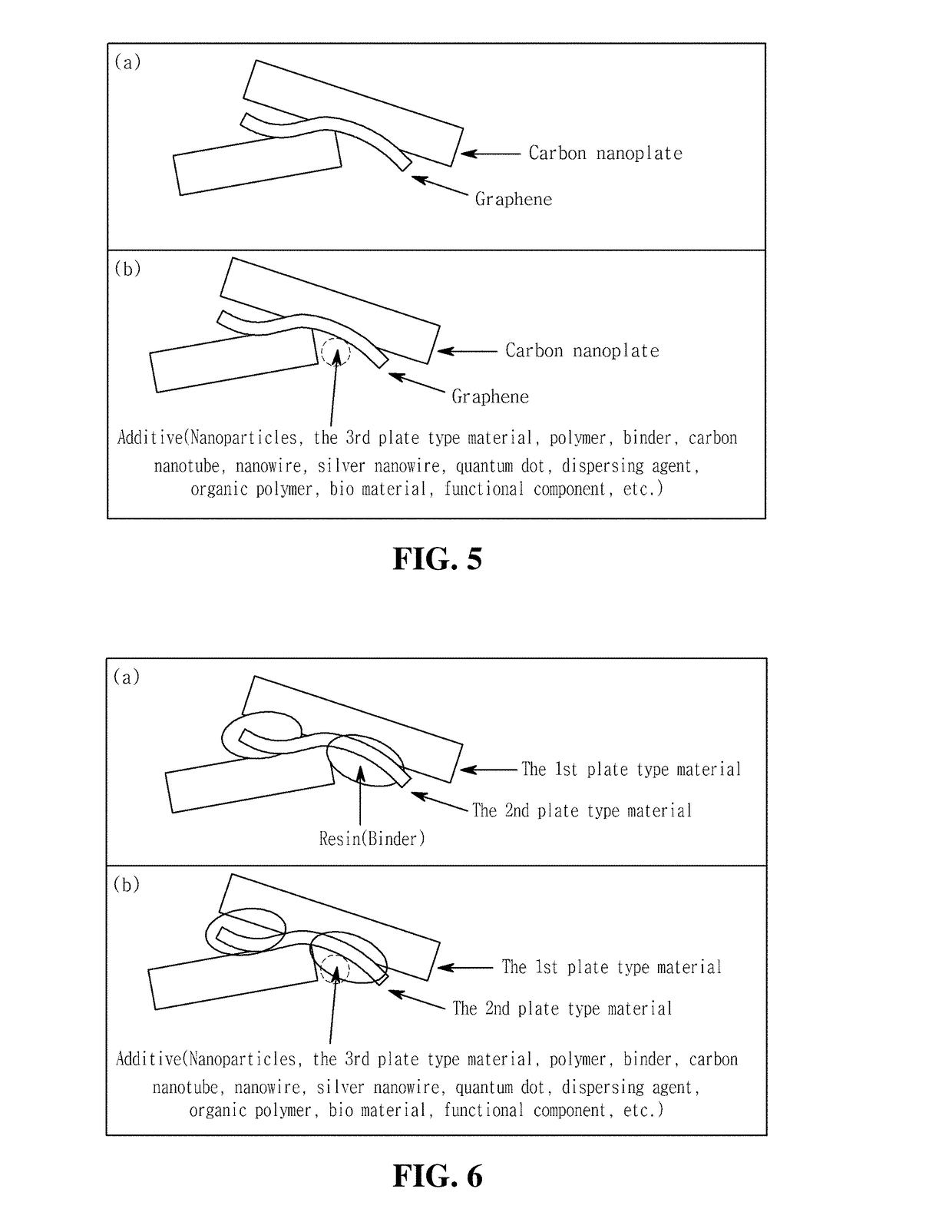Method for preparing two-dimensional hybrid composite
a two-dimensional hybrid composite and composite technology, applied in the direction of carbon-silicon compound conductors, physical/chemical process catalysts, lubricant compositions, etc., can solve the problems of difficult to completely eliminate oxygen radicals from the surface of graphene, difficult to make graphene as thin as 100 nm or less, and difficult to make graphene of good quality but difficult to produce, etc., to achieve enhanced properties and maximize the properties of two-dimensional plate type materials
- Summary
- Abstract
- Description
- Claims
- Application Information
AI Technical Summary
Benefits of technology
Problems solved by technology
Method used
Image
Examples
example 1
[0114]An approach to preparation of a graphite oxide may involve the Hummers' method including modified Hummers' method, Brodie method, Hofman & Frenzel method, Hamdi method, Staus method, etc.
[0115]In this specification, the modified Hummers' method is employed. More specifically, 50 g of micro-graphite powder and 40 g of NaNO3 are added to 200 mL of H2SO4 solution, and while cooling down, 250 g of KMnO4 is gradually added to the mixture for one hour. 5 L of 4-7% H2SO4 solution is gradually added, and then H2O2 is added. After a subsequent centrifugal separation, the precipitate thus obtained is washed with 3% H2SO4—0.5% H2O2 and distilled water to yield a yellowish brown aqueous graphene slurry.
example 2
[0116]To describe the chemical reduction method specifically, 2 g of 3% GO slurry is added to 100 ml of distilled water to get a uniform dispersion. After adding 1 ml of hydrazine hydrate, the graphene slurry is subjected to reduction at 100° C. for 3 to 24 hours. The reduced graphene in black is filtered out through a filter paper and then washed with water and methanol. Before applying a strong reducing agent such as hydrazine hydrate, a salt of alkali metal or alkaline earth metal, such as Kl or NaCl, can be added to remove the GO of H2O, partly recovering the carbon-carbon double bond.
[0117]In a more specific experiment, 6 g of Kl is added to 5% GO, and the mixture is kept for 6 days to complete the reaction. Then, the mixture is washed with distilled water and subjected to filtration. Beside the hydrazine or Kl method, there may also be used other methods of adding a reducing agent to the aqueous GO solution, where the reducing agent as used herein includes NaBH4, pyrogallol, H...
example 3
[0118]The aqueous graphene slurry obtained in Example 1 is subjected to heat treatment at above 300° C. to yield a graphene powder. In the present invention, the heat treatment at 600° C. is carried out in the nitrogen inert gas atmosphere for 10 minutes to prepare a thermoreduction graphene powder.
PUM
| Property | Measurement | Unit |
|---|---|---|
| thickness | aaaaa | aaaaa |
| thickness | aaaaa | aaaaa |
| thickness | aaaaa | aaaaa |
Abstract
Description
Claims
Application Information
 Login to View More
Login to View More - R&D
- Intellectual Property
- Life Sciences
- Materials
- Tech Scout
- Unparalleled Data Quality
- Higher Quality Content
- 60% Fewer Hallucinations
Browse by: Latest US Patents, China's latest patents, Technical Efficacy Thesaurus, Application Domain, Technology Topic, Popular Technical Reports.
© 2025 PatSnap. All rights reserved.Legal|Privacy policy|Modern Slavery Act Transparency Statement|Sitemap|About US| Contact US: help@patsnap.com



